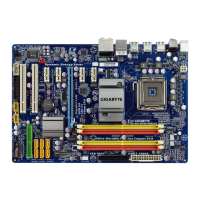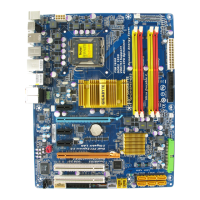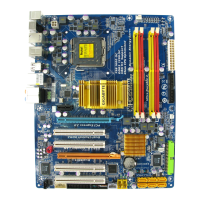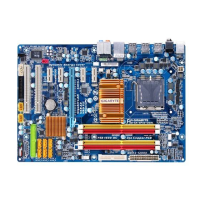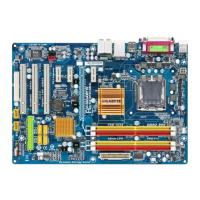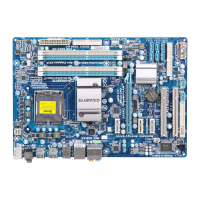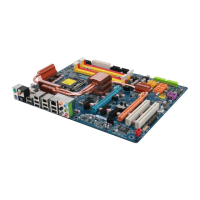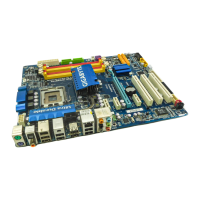
Do you have a question about the Gigabyte GA-EP45-UD3P and is the answer not in the manual?
| Memory voltage | 1.8 V |
|---|---|
| Number of memory slots | 4 |
| Maximum internal memory | 16 GB |
| Processor socket | LGA 775 (Socket T) |
| Processor manufacturer | Intel |
| USB 2.0 connectors | 12 |
| Power fan connector | Yes |
| Number of SATA connectors | 8 |
| Headphone outputs | 6 |
| Modem (RJ-11) ports | 0 |
| PS/2 ports quantity | 2 |
| USB 2.0 ports quantity | USB 2.0 ports have a data transmission speed of 480 Mbps, and are backwards compatible with USB 1.1 ports. You can connect all kinds of peripheral devices to them. |
| Audio output channels | 7.1 channels |
| Motherboard form factor | ATX |
| Compatible operating systems | Microsoft Windows Vista, XP |
| BIOS type | AWARD |
| LAN controller | Realtek RTL8111C |
| Networking features | 10/100/1000 Mbit |
| Trial software | Norton Internet Security |
| Depth | 244 mm |
|---|---|
| Width | 305 mm |
Guidelines for safely installing the motherboard and preventing damage.
Detailed technical specifications of the motherboard components.
Step-by-step guide for installing the CPU and its cooler.
Guide on installing memory modules.
Instructions for installing expansion cards into PCI/PCIe slots.
Guide for installing the SATA bracket for external connectivity.
Identification and description of all back panel connectors.
Identification and description of all internal motherboard connectors.
Displays the screens that appear when the computer boots.
Overview of the BIOS Setup main menu and navigation.
Configure CPU, memory clock, frequency, and voltages.
Configure system time, date, and drive parameters.
Configure boot order, CPU features, and display adapter.
Configure onboard devices like SATA, USB, audio, and LAN.
Configure power-saving functions and wake-up options.
Configure Plug and Play and PCI resource assignments.
Monitor system temperatures, voltages, and fan speeds.
Load the safest, minimal-performance BIOS default settings.
Load factory settings for optimal system performance.
Set or disable supervisor and user passwords for BIOS access.
Save BIOS changes and exit the setup program.
Exit BIOS Setup without saving any changes.
Enable or disable the security chip function.
Instructions for installing the chipset drivers from the driver disk.
Lists and describes GIGABYTE utilities and free software.
Provides access to application guides and motherboard manuals.
Links to the GIGABYTE website for contact information.
Displays basic system information.
Links to GIGABYTE's web site for downloading BIOS, drivers, and apps.
Utility for backing up and restoring system data.
Introduces GIGABYTE's Q-Flash and @BIOS update tools.
Utility for fine-tuning system settings and overclocking in Windows.
Technology for unparalleled power savings and efficiency.
Features hardware-based data encryption for storing TPM keys.
Easy and convenient data sharing tool for network computers.
Backs up and restores system data using Volume Shadow Copy Services.
Allows two network connections to act as one for increased bandwidth.
Steps to install and configure SATA hard drives.
Detailed guide for configuring Intel ICH10R SATA controllers.
Detailed guide for configuring GIGABYTE SATA2 SATA controllers.
Guide to create a driver diskette for SATA RAID/AHCI.
Steps to install the SATA RAID/AHCI driver and OS.
Guide to configure audio jacks and settings.
Steps to configure multi-channel audio output.
Instructions for installing the S/PDIF In cable.
Steps to enable Dolby Home Theater for enhanced audio.
Guide for setting up microphone recording.
Instructions for using the Sound Recorder application.
General troubleshooting steps for system startup issues.
Answers to common questions about BIOS and system operation.
A flowchart for diagnosing and solving startup problems.
Information regarding RoHS, WEEE, and environmental compliance.

